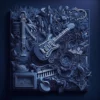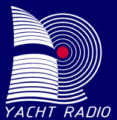Listeners:
Top listeners:
-
play_arrow
Радио Европа
-
play_arrow
BOOMBOX LIFE
-
play_arrow
Рок
-
play_arrow
Классика
-
play_arrow
Blues&Jazz
-
play_arrow
Театр

У микрофона в Студии «Яхт радио» — Максим Спутай.
МС: Здравствуйте. Второе десятилетие текущего века отметилось, увы, рядом громких банкротств. Зацепило процессом, конечно, и производителей яхт. Семейная верфь, Siltala Yachts, известная любителям паруса моделями яхт «Nauticat», в 2018 году объявила о своем банкротстве. Прошло три года и сегодня я сижу в офисе нового владельца легендарного бренда. Как говорится, прошу любить и жаловать. Мой друг, яхтсмен, предприниматель, основатель и руководитель парусной школы «Sunlight Sailing» Дмитрий Муратов.

МС: — Добрый день Дима.
ДМ: — Добрый.
МС: — Поздравляю с приобретением!
ДМ: — Спасибо! Спасибо за поздравление.
МС: — Только честно, пока не очень понимаю, то ли радоваться за тебя, то ли сочувствовать, потому сразу вопрос. Зачем? Что тобой руководило, когда принял такое решение, о покупке верфи?
ДМ: — Есть несколько моментов. Во-первых, основная моя деятельность, которой занимался и занимаюсь уже 28 лет, это постановка учета на производстве. 28 лет заниматься одним и тем же достаточно тяжело, и необходимо было что-то поменять, это один момент. Второй момент, наверное, уже лет 15 назад, точно не считал, я увлекся парусными яхтами. Причем яхтинг для меня начался в достаточно зрелом возрасте. И сегодня я дошел до собственной яхт-школы, наличия собственной парусной яхты.
МС: — Отмечу для наших радиослушателей: на момент приобретения бренда «Nauticat» ты уже опытный яхтсмен, руководитель школы, так?
ДМ: — Да, мой рост в яхтинге случился сравнительно быстро. А третий момент, момент случая: я увидел, что бренд «Nauticat» и все, что не успели растащить, распродать от производства, выставлено на аукционную продажу. Это, действительно момент случая, потому что такой шанс бывает далеко не каждый год. Вот все и сложилось. Соответственно, имея компетенции и знания, в нескольких областях, есть ожидание что, получится поднять и запустить производство. Плюс, еще момент, что за истекшие четыре года, а «Nauticat» обанкротился в 2018 году, что из-за коронавируса, ситуация со спросом на яхты значительно изменилась. Очередь на изготовление у многих именитых яхтенных верфей, на годы вперед. Все нормальные яхты на вторичном рынке, в нормальном состоянии, уже давно куплены. А заказ на новую яхту принимается, со сроком исполнения в 2024 году.
МС: -Вероятно ситуацию усугубляет тот факт, что часть известных верфей обанкротилось и предложений новых лодок на рынке стало меньше…
ДМ: — Такое тоже есть, рынок новых лодок сильно поменялся за истекшие года и, соответственно, обанкротившийся «Nauticat», сейчас имеет другие шансы на успешное восстановление, чем это было 4 года назад. Сейчас все сложилось в единое целое, осталось это правильно реализовать.
МС: — В какой части света будет возобновляться производство? Финляндия, Россия, Латвия, Германия? Или где-то еще в Евросоюзе?
ДМ: — На самом деле все очень просто: в первую очередь, конечно, хочется поднять производство в той стране, где я живу и родился. А родился я в Латвии, и потому она в приоритете. Латвия не самая удачная страна для производства, по разным причинам: экономическим, например. Есть проблемы с доступными трудовыми ресурсами и т.д. Тем не менее, первая попытка будет сделана здесь. Скорее всего, не будем ничего пытаться сделать в Финляндии. Потому что она достаточно дорогая и работая, в не родной стране, мы получим заведомо дорогой продукт. Можно было рассматривать Финляндию, если бы сама верфь, само производство не было разгромлено. Сейчас, мало что от него осталось. Вот и входной билет по созданию производства в Финляндии или Латвии, почти одинаков.
Рассматриваются варианты, запуска производства одной, двух моделей в России. В РФ серьезные ввозные сборы на яхты. 15% пошлина и 20% НДС. Также, стоимость рабочей силы в Европе и в России разная. Плюс стоимость энергоносителей… То есть, само производство в России, будет иметь себестоимость сильно дешевле. Другой момент — это качество. Яхты «Nauticat» всегда славились своим качеством и культурой производства. Культура производства в России и Европе, несколько разная, и более того, даже латвийская культура производства отличается, от культуры производства в Финляндии. Как говорил, изначально, мы будем делать производство в Латвии и надеюсь, что запустим несколько моделей и параллельно смотрим запуск 1-2 моделей в России. Возможно, в перспективе, запуск еще 1 -2 моделей в производство в какой-нибудь более теплой стране.
МС: — Партнеры в России и в теплых странах уже есть?
ДМ: — Естественно есть, потому что, ну, во-первых, модельный ряд большой, во-вторых, могут быть разные варианты исполнения. Изначально — «Nauticat» это стеклопластиковое производство на эпоксидных смолах. Но никто не исключает стальное производство, никто не исключает производство на полиэфирных смолах.
МС: — Дима, с языка снял вопрос! Когда мы анонсировали, что возьмем интервью у нового руководителя «Nauticat», коллеги яхтсмены прислали свои вопросы.
ДМ: — Задавайте, буду пытаться отвечать
МС: — С удовольствием тебе их задаю. Цитирую: «Планируется ли производство металлических, в частности, алюминиевых корпусов «Nauticat», или по-прежнему, они традиционно будут пластиковые?»
ДМ: — Планировать можно много чего… Можно планировать сделать корпус из углепластика, первый вопрос, все-таки, это реальный спрос, и реальные технологические возможности.
Для запуска стального производства, наверное, можно говорить о минимальной партии в 10 лодок одной размерности. А с другой стороны, со стальным производством немного легче. Потому, что есть база, где производство корпусов открыть можно практически сегодня. Необходима подготовка только технологической документации. Само оборудование уже есть, оно сегодня не загружено.
Для стальных «Nauticat» мне видится две ниши. Первая — это экспедиционные суда. И сейчас «Nauticat» считают «морским джипом» или внедорожником. В гости к пингвинам, на «Nauticat» со стальным корпусом и соответствующим оборудованием, вполне можно ходить. И конечно, в варианте кеч. Второй вариант, возможно, это будут какие-то яхты, может быть даже без парусов, для Голландии. Ходить по каналам, для внутренних вод, чисто моторные или опять же кеч, но возможно с уменьшенной грот-мачтой. Чисто моторная яхта, или с небольшим парусным вооружением, чтоб проветриться, когда ветерок задул. Это если смотреть про стальные суда. Алюминиевые вряд ли будем делать.
МС: — Марина Клочкова спрашивает, цитирую: «Какие модели из линейки «Nauticat» собираетесь производить и считаете перспективными, а какие наоборот, вычеркнуть из производства? Собираетесь ли сохранить качество «Nauticat», при этом держа высокую цену? Либо же снижать цену в угоду рынка, отказаться от каких-либо опций? Есть ли принципиально новые проекты, которые вы собираетесь реализовывать на существующей базе? И очень здорово, что верфь возродится.»
Про новый проект мы слегка коснулись, обсудили с тобой уже, а вот по поводу остальных моментов, что скажешь?
ДМ: — Вопрос, на самом деле достаточно длинный. Наверное пойдем по частям. Изначально будет гарантированно производиться 331-я модель. Самая распространенная, она была произведена в количестве более 1300 корпусов за всю историю «Nauticat». Дальше будем смотреть по моделям, которые были наиболее ходовые А это: 33-я, потом 35-я, 44-я, потом 52-я.
МС: — Коллеги спрашивают: будут ли 40, 42,44-м размером лодки?
ДМ: — 44 скорее всего будет, но 42, 44 они рядышком, и корпуса другие, дальше будем смотреть.
То есть повторюсь, изначально будут запускаться наиболее ходовые модели, которые имели больше спрос.
Следующий момент, самый важный, качество и цена. Это стандартные в обществе качели. Если хочешь сделать качественно, то дешево произвести не получиться. Мы, в первую очередь будем смотреть на качество, совсем дешево — не может получиться по определению. Мы будем производить «Nauticat», и если это будет качественно, то будет по достаточно дорогой по цене.
Другой момент, мы сами для себя рассматриваем, не готов сказать, что это «Вау!» идея, что мы ее приняли, и начали сегодня реализовывать. Может быть, будет версия более бюджетная… То есть будут те же корпуса, но лодки будут более бюджетные в базовой комплектации. Не исключено, что у нас будет корпус на основе полиэфирной смолы и более скромная базовая комплектацию от более бюджетных производителей. Но будем смотреть, на сколько может получиться производство более бюджетным и при сохранении качества. Сегодня ответить не готов.
МС: — Я встречал примеры, когда в условиях пандемийного выживания, мелкосерийная верфь предлагает клиентам корпуса, различной комплектации: с мотором и без, с парусным вооружением или только с возможностью его установить самостоятельно. С различными вариантами отделки. Этакий конструктор «доделай сам». Не думал в этом направлении? Есть достаточно многочисленная категория самостройщиков, среди яхтсменов, которая обладая разной степенью квалификации, сами создают лодки. И хотя, иной раз без слез смотреть невозможно, на то, что сваяли в гараже на задворках… Но при всем при этом, необходимо отметить, что немалое количество очень достойных, и даже уникальных лодок рождено именно умельцами. Наверное, нельзя такой сегмент спроса игнорировать? Он имеет право быть?
ДМ: — Игнорировать, мы сегодня не будем ничего. То есть, если есть у нас запросы, окей. Мы готовы изготовить корпус, мы готовы изготовить палубу с надстройкой. Можем изготовить по полиэфирной технологии или по эпоксидной.
МС: — Если продолжать фантазировать в этом направлении — предложить рынку готовый и сертифицированный корпус. Укомплектованный самым необходимым для безопасного мореплавания. Мотор, навигационные приборы, минимальная отделка в бюджетном варианте. Вант-путенсы, стэпс, т.е. все необходимые узлы для установки рангоута и такелажа. По аналогии с жилой недвижимостью квартиру в новостройке с серой отделкой, сухо, тепло, вода, канализация и свет есть, но все остальное сам, своими ручками.
ДМ: — Такие варианты тоже могут быть, в принципе, все это реально. Когда идет серийное производство, какой-то полуфабрикат, вытащить с цеха вполне реально.
МС: — Дима скажи: планируете ли вы пускать какое-то количество лодок для свободной продажи, или только под заказ, только под конкретного клиента с полной предоплатой?
ДМ: — Что-то, на открытый рынок пойдет, что-то пойдет под наши фантазии. Сейчас у нас творчество ограничено тем, что нам надо запустить производство, стартануть. То, что мы получили сейчас, сильно меньше, чем нам хотелось. И сильно меньше, чем необходимо для немедленного запуска производства. Естественно, есть свои фантазии, есть и свои желания. Последнее время, я смотрел лодки для смены – обновления флота в яхтшколе. И получилось, что не сильно устраивают существующие предложения на рынке.
МС: — Смена? Или пополнение, в школьном флоте?
ДМ: — Изначально смена, а в последствии пополнение, расширение.
Скорее всего в результате наших фантазий появятся версия «Nauticat» по компоновке ближе к чартерной лодке. Изначально, в первую очередь, «Nauticat» это семейная яхта, для семейного отдыха. Может, появится версия более экспедиционная, предназначенная для комфортного размещения большого экипажа. Изначально мы будем смотреть такую компоновку для себя, то есть четырех — пяти каютный вариант. Если такая версия вызовет интерес у покупателей, то мы пустим и в серийное производство. Тогда у «Nauticat» может начаться чартерная жизнь.
МС: — Дима пару слов о школе, скажешь?
ДМ: — Школа называется «Sunlight Sailing», на русском языке «Солнечный яхтинг», у нас есть юридическое лицо как в Европе, в Латвии, так и в России — «Солнечный яхтинг». Сейчас у нас теоретическое обучение происходит в он-лайн, а практика — только на лодках. Любимая локация, это Турция. При этом, несколько групп летом обязательно делаем на Балтике, в Риге. Плюс, иногда проводим практическое обучение в Аликанте.
МС: — Личный вопрос можно? Я сознаюсь, испытываю определенную слабость к кечам. Следующей моей яхтой, будет точно двухмачтовый кеч. Я не встречал ни одного предложения от школ, кто мог бы произвести переподготовку, мастер классы для владельцев таких лодок. А есть же своя специфика, верно? Нет ли в планах организовать такого обучения на базе твоей школы? Кечей все больше и больше появляется, их популярность растет. Тем более и производство свое, тебе и карты в руки как говорится.
ДМ: — Специфика управления кечем есть, но, есть несколько моментов.
Первый момент, в основном масса наших клиентов-курсантов, это те люди, кто хотят потом в дальнейшем брать лодки в чартер. Чартерных кечей практически нет, есть единичные хозяйские , которые отдают в чартер своими хозяевами. То есть с этой точки зрения, спрос очень небольшой. Другой момент, что действительно, как только мы запустимся, все свои лодки будем, естественно, тестировать, как-то проверять их. Естественно у нас, на воде, будет постоянный флот. Это будут демо-лодки, это будут учебные лодки, можно называть их по-разному. А если у нас есть лодки на воде, и с парусным вооружением кеч, то вполне нормальным будем пробовать набирать учебные группы.
МС: — Дима ты вскользь упомянул, чартерные нужды яхтсменов. Твое мнение — чартер на Балтике возможен? Я понимаю тут и сезон короткий, и бывает тепла не дождешься, вообще все лето. Но пример с Норвегией: «космический прайс», бронирование с 100% предоплатой за два, а то и за три года вперед.
ДМ: — На Балтике, если мы говорим о чартерном флоте, в Риге на сегодняшний день, а вернее в Латвии, нет ни одной чартерной лодки в системах бронирования. Были, две лодки из Литвы, и лодок 5 из Эстонии.
Если мы смотрим Швецию- Финляндию, в этих странах много мест, куда можно ходить на яхтах. На сколько, востребован чартерный флот в Латвии я не знаю. Сейчас есть пару лодок, которые можно взять тут в чартер, через локальные рекламные объявления, но это все не развито. И в Латвии, и в отличии, от Эстонии, ходить на яхте особо некуда. Есть Рижский залив, а береговая инфраструктура достаточно скудная. Есть остров Рухну, хотя это уже эстонский остров. Это то, куда мы можем успеть из сходить из Риги за неделю.
В Эстонии островов больше 1000. Там есть куда походить. Но основная масса яхтенных портов там, имеют гарантированную глубину до 2 метров. Лодки класса Альбин Вега, и до 35 футов, могут безопасно зайти в любой. Если мы берем классическую чартерную яхту длиной более 40 футов, то осадка будет 2 метра, или больше, что сильно ограничивает заход.
МС: — И вот тут выходит на передний план, красавец кеч, ведь одно из его важнейших преимуществ на Балтике, заметно меньшая осадка. По сравнению с лодками такой же длинны.
ДМ: — Конечно выходит кеч, но есть второй момент – у «Nauticat» есть в ассортименте несколько килей. Скорее всего, будет один из вариантов с осадкой 1,60 м. И будет яхта 52 фута длиной, способная зайти в любой эстонский или шведский порт. И в производстве у нас такой вариант обязательно будет. Иначе получается, что часть «домашней акватории» закрыта для наших «Nauticat». Есть ограничения акватории и хочется, что бы в нашей акватории их было много, а не только уходили далеко за океан.
МС: — Дима спасибо тебе за классную беседу. Удачи тебе и твоему коллективу. Удачи «Nauticat» и всем нам. Будем следить за вашими успехами коллеги, и делится новостями с нашими радиослушателями.
ДМ: -Пожалуйста, заходите еще.
At the microphone «Yacht Radio» – Maksim Sputai.
MC: Hello. The second decade of the current century has been marked, unfortunately, with a number of high-profile bankruptcies. Of course, yacht manufactures were also hooked by this process. Family branch, Siltala Yachts, known to sail lovers by yacht models «Nauticat» In two thousand eighteen they announced about the bankruptcy. After three years and today I’m sitting in the office of the new owner of the legendary brand, as they say, I ask you to love and favor. My friend, yachtsman, businessman, founder and head of the sailing school «Sunlight Sailing» Dmitry Muratov.
MC: — Good afternoon, Dima.
DM: — Good afternoon.
MC: — Congratulations with the purchase!
DM: — Thanks! Thanks for congratulations.
MC: — Honestly, I don’t really understand yet, whether to be happy for you, or sympathize, therefore, the question immediately arises: — why, what guided you when you made such a decision about buying a shipyard?
DM: — There are several points, firstly, my main activity, which I have been doing and have been doing for twenty eight years, accounting for production, and it is quite difficult to do the same thing for twenty eight years, and it is necessary to change something, this one moment. The second point is probably already fifteen years ago, I didn’t exactly count, I got carried with sailing yachts, and yachting for me started at a fairly mature age. And I reached my own yacht school, the presence of his own sailing yacht.
MC: — I will note for our radio listeners: at the time of acquisition of the «Nauticat» brand, you already an experienced yachtsman, the head of school, right?
DM: — Yes, my growth in yachting happened relatively quickly. And the third moment, the moment of the case, I saw that the brand «Nauticat» and everything that was not disassembled, sold out from the «Nauticat» production, was put up for auction. This is really a moment of chance, because such a case does not happen every year. Everything worked out. Accordingly, having competencies and knowledge in several areas, there is an expectation that it will be possible to raise and launch production.
Plus, another point is that over the past four years, and «Nauticat» went bankrupt in two thousand and eighteen, that due to the coronavirus, the situation with the demand for yachts has changed significantly, the queue for production at many famous yacht shipyards, for years to come. All normal yachts on the secondary market, in normal condition, have been bought for a long time, and an order for a new yacht is accepted with a deadline of two thousand twenty-four.
MC: — And in which part of the world will production be resumed in Finland, Russia, Latvia, Germany or somewhere else in the European Union.
DM: — In fact, everything is very simple: first of all, of course, I want to raise production in the country where I live and was born. I was born in Latvia, and Latvia is a priority. Latvia is not the most successful country for production, for various reason: economic, there are problems with available labor resources and etc. But nevertheless, the first attempt will be made here. Most likely, we will not try to do anything in Finland, because Finland is a fairly expensive country and working in a non-native, expensive country we will get expensive product.
Finland could have been considered if the shipyard itself, the production itself, had not been destroyed. Now, there is little left of it, that’s the entrance ticket for the creation of production in Finland or Latvia, they are almost the same. Options are being considered, and options for launching the production of one or two models in Russia are being seriously considered. In Russia, serious import duties on yachts are fifteen percent duty and twenty percent VAT.
Similarly, the cost of labor in Europe and in Russia is different, Plus the cost of energy carriers, that is, the production itself in Russia, it will have a much cheaper cost in production. Another point is the quality. «Nauticat» yachts have always been famous for their quality and production culture. The production culture in Russia and Europe is somewhat different, and moreover, even the Latvian production culture is different from the production culture in Finland. Initially, we are trying to make production in Latvia and I hope that we will launch several models and in parallel we are watching the launch of one-two models in Russia. Perhaps, in the future, the launch of another one-two models into production in some warmer country.
MC: — Do you already have partners in Russia and in warm countries?
DM: — Naturally there is, because, well, firstly, the model range is large, secondly, there may be different versions, initially — «Nauticat» is a fiberglass production based on epoxy resins. But no one excludes steel production, no one excludes production on polyester resins.
MC: — Dima took the question off the tongue, when we announced that we would take an interview, fellow yachtsman sent their questions to the new head of «Nauticat».
DM: — Ask questions, I will try to answer.
MC: — I’m happy to ask them to you. I quote: «Is it planned to produce metal, in particular, aluminum «Nauticat». housings, or, as before, will they traditionally be plastic?”
DM: — You can plan a lot of things, you can plant to make a case of carbon fiber, the question is still – this is real demand, and real technological opportunities.
To launch steel production, we can probably talk about at least a batch of 10 boats of the same dimension. And on the other hand, it is a little easier with steel production because there is a base where steel production of hulls can be opened almost today. It is necessary to prepare only technological documentation for steel production. The equipment itself is already there, it is not loaded today.
For steel «Nauticat»., I see two niches. The first is expeditionary vessels. And now the «Nauticat». is considered a «marine jeep» or an SUV. On a visit to the penguins on the «Nauticat». with a steel hull and appropriate equipment, it is quite possible to go and, of course, in the Ketch version. The second option, perhaps, will be some yachts, maybe even without sails, for Holland. To walk on the canals, for inland waters, purely motor or again Ketch, but it is possible with a reduced mainmast. A purely motor yacht, or with a small sailing armament, will air out when the breeze blows. This is if you look at steel vessels. Aluminum is unlikely to be done.
MC: — Marine Klachkova asks, I quote: «Which models from the «Nauticat» line are going to be produced and consider promising, and which ones, on the contrary, should be deleted from production. Are you going to keep the quality of «Nauticat», at the same time keeping a high price, or to lower the price for the sake of the market, to refuse any options, are there any fundamentally new projects that you are going to implement on the existing base and it’s great that shipyard will be revived. »
We touched on the new project a little, discussed it with you already, but about the rest of the points, what do you say?
DM: — The question is actually quite long. We will probably go in parts. That is, initially three hundred and thirty-one models will be guaranteed to be produced, which is the most common, it was produced in an amount of more than one thousand three hundred pieces in the entire history of «Nauticat». Then we will look at the models that were the most popular, these were our models: thirty-three the most popular, then thirty- five, forty-four, then thirty-two.
MC: — Colleagues ask if forty, forty-two point forty-four will be the size of a boat
DM: — forty-four is likely to be, but forty-two, forty-four they are side by side, but the buildings are different, we will look further.
That is, I repeat, initially the most popular models that had more demand will be launched.
The next point, the most important, is quality and price. This is a standard swing in society, if you want to do it qualitatively, then you will not be able to produce it cheaply. We, first of all, will look at the quality, very cheap — it cannot turn out «Nauticat» as such. We will produce «Nauticat», and if it is of high quality, it will be quite expensive in price.
Another point, we are considering for ourselves, I am not ready to say that this is a «Wow!» idea, that we accepted it and started implementing it today. Maybe there will be a more budget version, that is, there will be the same hulls, but the boats will be more budget in the basic configuration. It is possible that we will have a case based on polyester resin and a more modest basic configuration from more budget manufacturers. But we will look at how much production can be more budget-friendly and while maintaining quality, so I’m not ready to answer today.
MC: — I have seen examples when in the conditions of pandemic survival. The small-scale shipyard offers customers hulls of various configurations with and without a motor, with a sail armament or only with the ability to install it yourself, with various trim options. A kind of «do it yourself» designer did not think in this direction?
DM: — We thought about it, but I’m not ready to answer yet. Of course, there are a lot of thoughts, we don’t really know if we will make such hulls, because kits with hulls must come with certification documentation so that the maritime administration can register the yacht and give at least a «B» category, at least. Accordingly, in addition to hull products, there is a deck, mortgages, details, etc. There is an opportunity to produce this, but it is necessary to understand the demand.
We considered the market of just projects. Projects cost very different money, namely, as project documentation. We are thinking about it, but I don’t know yet whether it will be or not. Now I can’t say that yes, we are releasing thirty-three models on Monday in the form of a set of spare parts, or selling a set of documentation for manufacturing. No such decision has been made yet, but we are thinking in this direction.
MC: — There is a fairly large category of self-builders, among yachtsmen, who have different degrees of qualification: they create boats themselves, although sometimes it is impossible to look without tears at what was soldered in the garage in the backyard. But with all this, it should be noted, a considerable number of very worthy, and even unique boats born by craftsmen. Probably, it is impossible to ignore such a segment of demand, he has a right to be.
DM: — We won’t ignore anything today, that is, if we have requests, okay, we are ready to make a hull, we are ready to make a deck with a superstructure, we can manufacture using polyester technology or epoxy technology.
MC: — If continue to fantasize in this direction, we will offer the market a ready-made and certified hull, equipped with the most necessary for safe navigation. Motor, navigation devices, minimal finishing in the budget version, shrouds, steps, i.e. all the necessary components for the installation of the mast and rigging. By analogy with residential real estate, an apartment in a new building with a gray finish, dry, warm, water, sewerage and light are there, but everything else is by myself, with my own pens.
DM: — There may also be such options, in principle, all this is real. When there is mass production, some kind of semi-finished product, it is quite realistic to pull it out of the workshop.
MC: — Dima, tell me: do you plan to launch a certain number of boats for free sale, or only upon request, only for a specific client with full prepayment.
DM: — Something will go to the open market, something will fit our fantasies, now our imagination is limited to the fact that we need to start production. What we have received now is much less than we would like to receive and much less than is necessary for the immediate start of production. Naturally, there are their fantasies, there are their desires. Lately, I’ve been watching boats for fleet change-updates at the yacht school. And it turned out that they are not very satisfied with the existing offers on the market.
MC: — Change or replenishment, in the school fleet?
DM: — Initially, the change, and later replenishment, expansion. Most likely, as a result of our fantasies, a version of the «Nauticat» will appear in layout closer to a charter boat. Initially, first of all, «Nauticat» is a family yacht, for family holidays. A more expeditionary version may appear, designed for a comfortable settlement of a large crew. Initially, we will look at such a layout for ourselves, that is, a four- or five-cabin version. If such a version arouses the interest of buyers, then we will put it into mass production, if there are orders, then «Nauticat» can start a charter life.
MC: — Dima a few words about the school, will you say?
DM: — The school is called «Sunlight Sailing», in Russian «Solnechniy Yachting», we have a legal entity both in Europe, in Latvia, and in Russia — » Solnechniy Yachting «. Now we have theoretical training online, and practice — only on boats. Our favorite location is Turkey. At the same time, we definitely do several groups in the summer in the Baltic, in Riga, Plus, sometimes we conduct practical training in Alicante.
MC: — A personal question is possible? I confess I have a certain weakness for Ketch. My next yacht will definitely be a two-masted Ketch. I have not met more than one offer from schools who could retrain, master classes for training for owners of such boats. And there Is its own specifics, right? Are there any plans to organize such training on the basis of your school? There are more and more Kechs, their popularity is growing. Moreover, your own production, you and the cards in your hands, as they say.
DM: — The specifics of the Cache management are there, but there are several points.
The first point is that most of our clients are cadets, these are the people who want to charter boats later on. There are practically no charter Ketches, there are single master Ketches that are chartered by their owners, that is, from this point of view, the demand is very small. Another point is that, indeed, as soon as we launch, we will, of course, test all our boats, somehow check. It is natural to develop them, that is, we will have a permanent fleet on the water. These will be demo-boats, these will be training boats, you can call them in different ways. And if we have boats on the water, and with sailing Ketch armament, then we will try to recruit training groups quite normally.
MC: — Dima, you casually mentioned the charter needs of yachtsmen. Do you think a charter in the Baltic is possible? I understand that the season is short here, and sometimes you can’t wait for heat, in general, all summer. The example of Norway: «space price», booking with 100% prepayment for two or even three years in advance.
DM: — In the Baltic, if we are talking about a charter fleet, in Riga today, or rather in Latvia, there is not a single charter boat in the booking systems. There were, in the booking systems, two boats from Lithuania, and five boats from Estonia.
If we look at Sweden- Finland, there are many places in these countries where you can go on yachts. I do not know how much the charter fleet is in demand in Latvia. Now there are a couple of boats that can be chartered in Latvia through local advertisements, but this is all undeveloped. And in Latvia, unlike Estonia, there is nowhere to go on a yacht. There is the Gulf of Riga, and the coastal infrastructure is quite poor. There is the island of Ruhnu, although it is already an Estonian island. In general, this is where we can have time to go from Riga in a week.
There are more than one thousand islands in Estonia. There’s a lot to walk around. But in Estonia, the bulk of yacht ports have a guaranteed depth of up to two meters. Albin Vega class boats, up to thirty-five feet, can safely enter any port. If we take a classic charter yacht with a length of more than forty feet, then the draft will be two meters or more, which greatly restricts entry into ports.
MC: — And here comes to the fore, the handsome ketch, because one of its most important advantages in the Baltic is noticeably less sediment, compared to boats of the same length.
DM: — Of course, ketch comes out, but there is a second point – «Nauticat» has several keels in its assortment. Most likely there will be one of the options with a draft of one point sixty meters. And there will be a yacht fifty-two feet long, capable of entering any Estonian or Swedish port. And we will definitely have such an option in production. Otherwise, it turns out that part of the «home water area» is closed to our «Nauticat». There are limitations of the water area and I want there to be a lot of «Nauticat» in our water area, and not just boats going far beyond the ocean.
MC: — Dima, thank you for a great conversation. Good luck to you and your team. Good luck to «Nauticat» and all of us. We will follow your progress colleagues and share the news with all radio listeners.
DM: — Please come again.
Written by: glavred
Похожие записи
Последние новости
Польские подводные археологи обнаружили в Восточном Средиземноморье следы древнейшего затонувшего торгового судна
Ученые открыли новый вид хищника, обитающего в океане, о котором никто не знал
Dusseldorf Boot Show 2024. Премьеры: Moody DS48
Первый удачный опыт по сжиганию триеры римлян светом солнца: что получилось у архимедов Массачусетского института
Несметные богатства с затонувшего испанского галеона оцениваются в $20 млрд
Интересное
последние новости
О НАС
Яхт-радио, это интернет-проект, созданный коллективом волонтеров. Первое Яхтенное, Первое Волонтерское, территория, свободная от политики!














